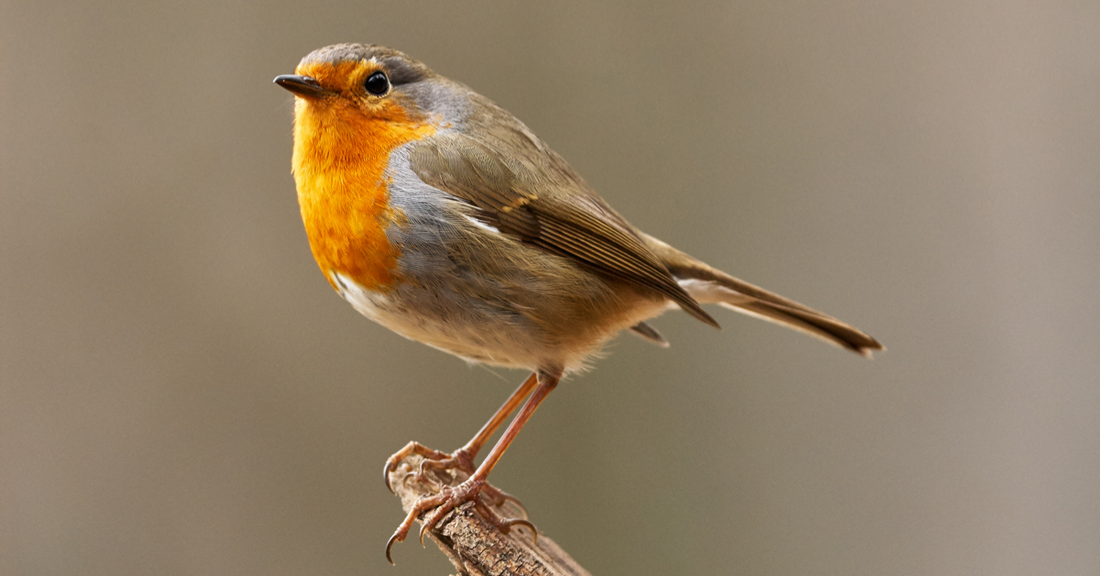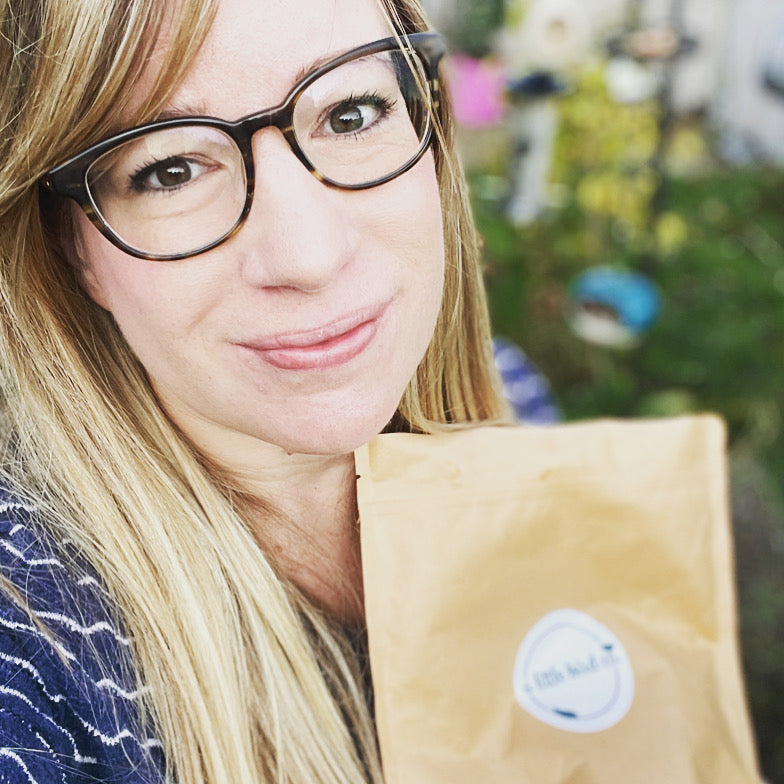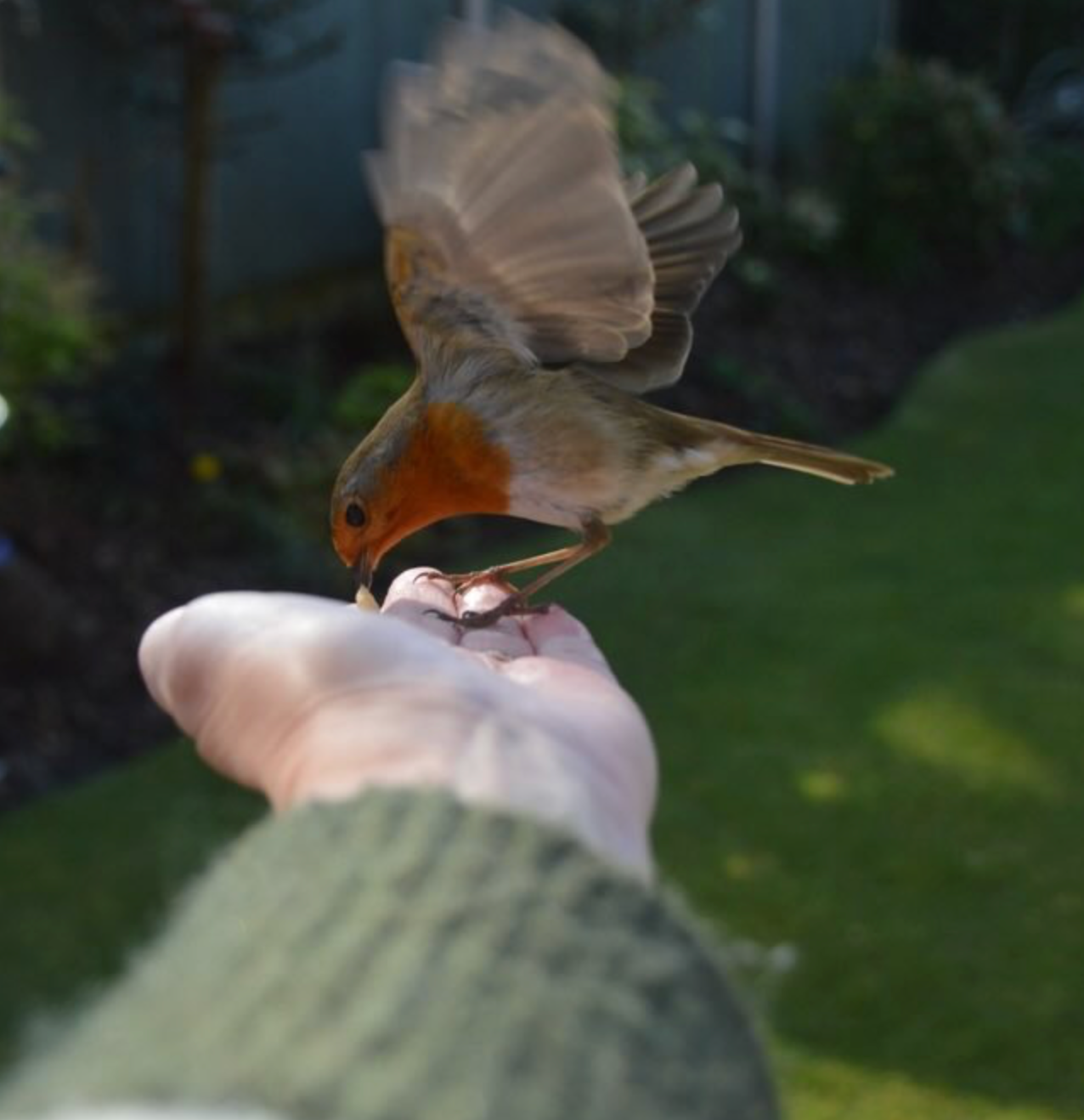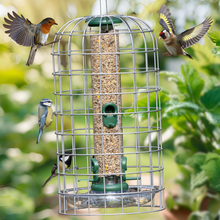A Garden Birdwatcher’s Guide to The Robin

Voted Britain’s favourite bird, robins are one of the most recognisable and frequently seen garden visitors. They make their homes in gardens, hedges, and woodlands, constructing well-built, cup-shaped nests using dead leaves, grass, and moss, and lining them with hair. Robins are opportunistic nesters, often choosing a spot low down in ivy, brambles, and hedging. They have even been found making a home in wellington boots, coat pockets, watering cans, and post boxes. Robins will also happily make use of an open-fronted nest box.
Robins start pairing up as early as January during mild winters and often find a mate by March. During courtship, a male robin is expected to feed his mate, bringing her insects and seeds whenever she calls, which can be as many as fifty times a day. The female will lay two to three broods of 5-6 white eggs covered in red speckles between April and June.
Interestingly, we didn’t have a word for the colour orange until the fruits were imported in the sixteenth century, which is why robins were originally known as “redbreast,” even though their colouring is more orange than red. No two robins have matching red breasts – each one is unique.
Robins have large eyes to help them forage for food under hedgerows and short, rounded wings for flying between trees in their traditional woodland habitats. They have thin, seed-eating beaks and also enjoy eating insects, which they use to keep themselves free from parasites. Robins rub ants and millipedes, which they trap in their beaks, along their feathers. The defensive chemicals released by the insects act as a form of insecticide, killing the mites and ticks living on the robin.
Although previously thought to belong to the thrush family, DNA analysis has now shown that robins belong to the flycatcher group. They can be found all over Europe (except in Iceland) and rarely travel more than a few kilometres from where they were born throughout their lifetime. The size of a robin’s territory depends on the quality of the habitat and the number of other birds in the area. Robins are more territorial in built-up areas due to fewer nesting and feeding opportunities.
Robins are well known for their territorial behaviour, often displaying their red breast to warn other birds away from their patch. If an adversary isn’t intimidated by his red breast, a robin will sing, fluff up his throat feathers, put up his tail, and bow down to assert his dominance. When body language and furious singing fail to scare away a perceived threat, a robin will attack, pecking at the neck and lashing out with its claws. It is thought that ten percent of all robin deaths are caused by robin-on-robin fighting. Robins are so territorial that they will defend their feeding grounds (usually 650 to 5,000 square metres) against other species with similar diets, and have even been known to violently attack stuffed robins, dead birds, men with red beards, and bunches of red feathers.
If you see two robins co-existing happily in your garden, they are most likely a mating pair. Juvenile robins don’t grow their red feathers until after their first partial moult, which prevents adult robins from attacking their young before they have a chance to leave the breeding site.
While most birds sing mainly in spring to establish territories and find or protect a mate, robins sing year-round to defend their territories (only pausing briefly while moulting their feathers). So, if you hear birdsong on a bright winter’s day, it is most likely a robin. They have a varied, sweet musical song and a more urgent contact call and alarm call. Juveniles use a soft, fluttering sub-song to practise for their first mating season. A robin’s song becomes brighter and bolder as spring arrives, with the changing season increasing testosterone in male robins.
Our connection with robins is long-standing, and they frequently appear in our folklore and literature. Harming a robin or destroying its nest is thought to bring bad luck, and various stories have been written to explain the robin’s bright red breast. Some believe the blood of Jesus fell on the robin while the bird plucked thorns from his head during the crucifixion. Others say the robin was burnt while protecting the wren from the flames of hell when the two birds ventured into the underworld to bring up fire during a particularly cold winter.
It is also said that when a robin sings from beneath a bush, the weather will be rainy, while a robin singing from the top signifies sunny days ahead. For many years, these beautiful and bold little birds have symbolised luck and happiness. Some even believe they represent the souls of lost loved ones. Whatever you believe, I don’t doubt that a robin visiting your garden will bring a smile to your face, as it does to mine.
Ready to deepen your connection with the birds in your garden? Discover more about your feathered friends and how to attract them to your space with Amidst the Birdsong: A Garden Birdwatcher's Journal. This beautifully crafted journal is the perfect companion for anyone looking to observe and learn about the birds visiting their garden. Start your birdwatching journey today – click here to learn more.

















